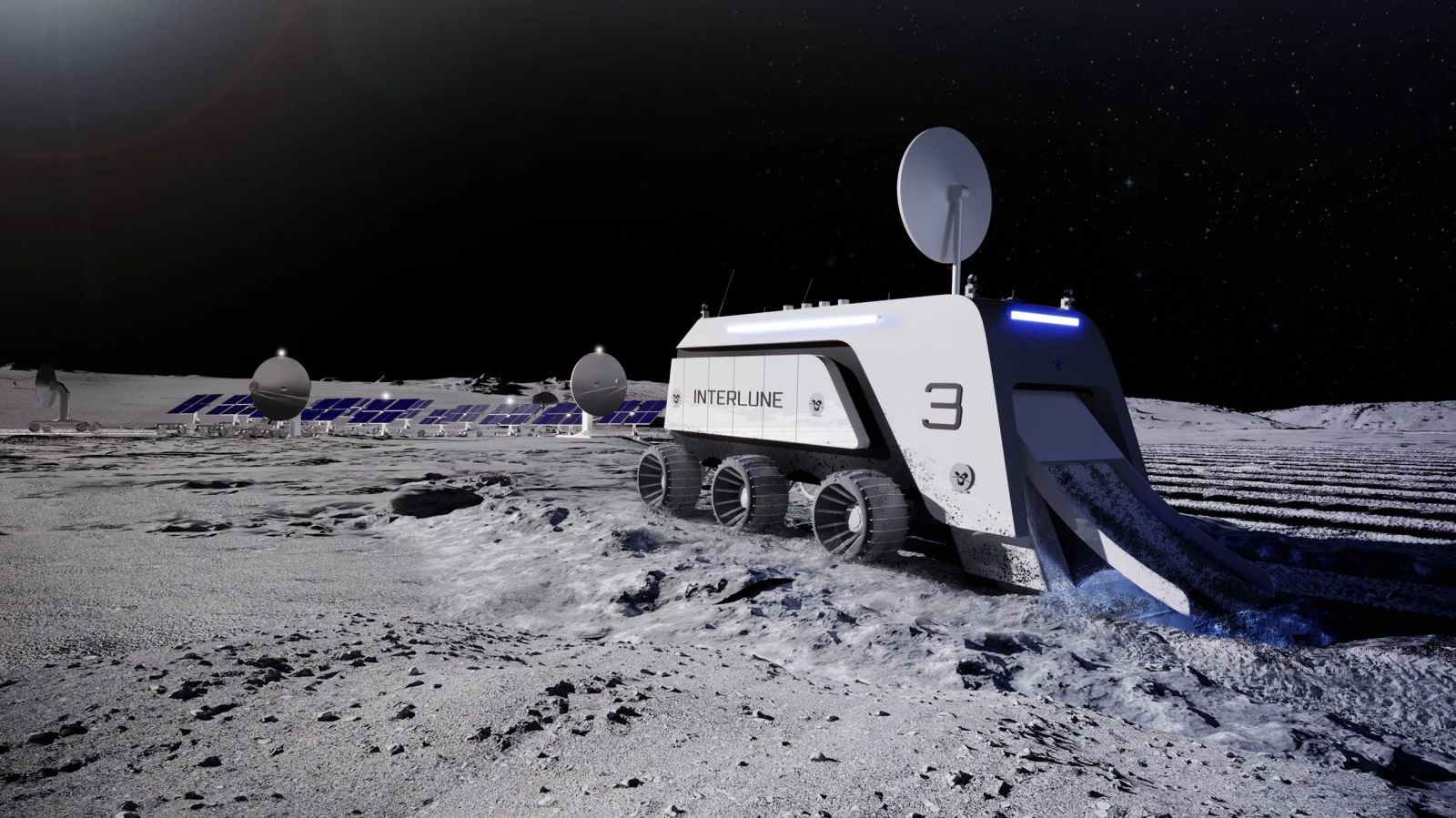Follow us on Google News (click on ☆)
Helium-3 is a light isotope of helium present in minute quantities on Earth but more abundant on the Moon. It accumulates in the lunar regolith, that layer of dust and debris covering the surface, after being transported by the solar wind for billions of years. Meteorite impacts have mixed this regolith to a depth of several meters, dispersing the helium-3 heterogeneously. Its precise detection represents a major technical challenge, as traditional prospecting methods struggle to locate these deposits effectively.

A rendering of the Interlune Harvester, which will incorporate excavation equipment developed in partnership with Vermeer.
Credit: Interlune
The company Interlune, founded in 2020 with the expertise of former Blue Origin technicians, is positioning itself as a pioneer in this race for lunar resources. Led by Rob Meyerson and advised by geologist astronaut Harrison Schmitt, it is developing excavators capable of processing 100 tons of regolith per hour. Their immediate goal is to supply helium-3 for quantum computers, where it serves as an essential refrigerant to maintain chips at temperatures close to absolute zero. Bluefors, a manufacturer of cryogenic systems, has already committed to purchasing up to 10,000 liters annually.
An alternative approach is being developed by Magna Petra, which favors gas capture over traditional excavation. Their patented technology involves mechanically disturbing the lunar surface to release helium-3 as gaseous plumes, enabling more energy-efficient collection. Jeffrey Max, the company's leader, explains that this method requires less infrastructure and could be tested during reconnaissance missions as early as 2027-2028. A partnership with the Japanese company ispace aims to realize these ambitions.
Future missions are actively being prepared. Interlune plans to send a multispectral camera on Astrolab's FLIP rover as early as December, while Magna Petra is collaborating with Intuitive Machines for lunar landers. However, David Lawrence, a physicist at the APL laboratory, highlights the difficulties of mapping, suggesting that detecting titanium in ilmenite could serve as an indirect indicator of helium-3 concentrations. These technological advances could lay the foundation for a sustainable space economy.
Helium-3 and its applications
Helium-3 is a rare isotope of helium containing two protons and one neutron, unlike common helium-4 which has two neutrons. Its rarity on Earth is explained by its low presence in the atmosphere and its absence in natural gas deposits.
In the medical field, helium-3 is used in magnetic resonance imaging of the lungs, allowing visualization of pulmonary ventilation with unmatched precision. Researchers are also exploring its potential for the early diagnosis of respiratory diseases.
For nuclear fusion, helium-3 could serve as fuel in advanced fusion reactors, producing less radioactive waste than reactions using tritium. However, this application requires major technological advances in mastering fusion reactions.
Its role in cryogenics is particularly important for quantum technologies, where it enables temperatures below 2 kelvins to be reached, an essential condition for the operation of superconductors and quantum processors.
Lunar regolith
Lunar regolith is a layer of unconsolidated materials covering the Moon's surface, several meters thick and composed of dust, rock fragments, and microscopic glasses formed by meteorite impacts.
Its formation results from billions of years of bombardment by micrometeorites and cosmic radiation that pulverized the original lunar rock. This process created a layer of extremely fine and abrasive dust.
The composition of the regolith varies according to lunar regions, with higher concentrations of titanium in the lunar maria. Ilmenite, a titanium-rich mineral, has a particular affinity for trapping helium-3 particles from the solar wind.
Beyond potential resources, regolith poses technical problems for exploration: its powdery nature can clog equipment and its electrostatic character causes it to adhere to space suits and vehicle surfaces.